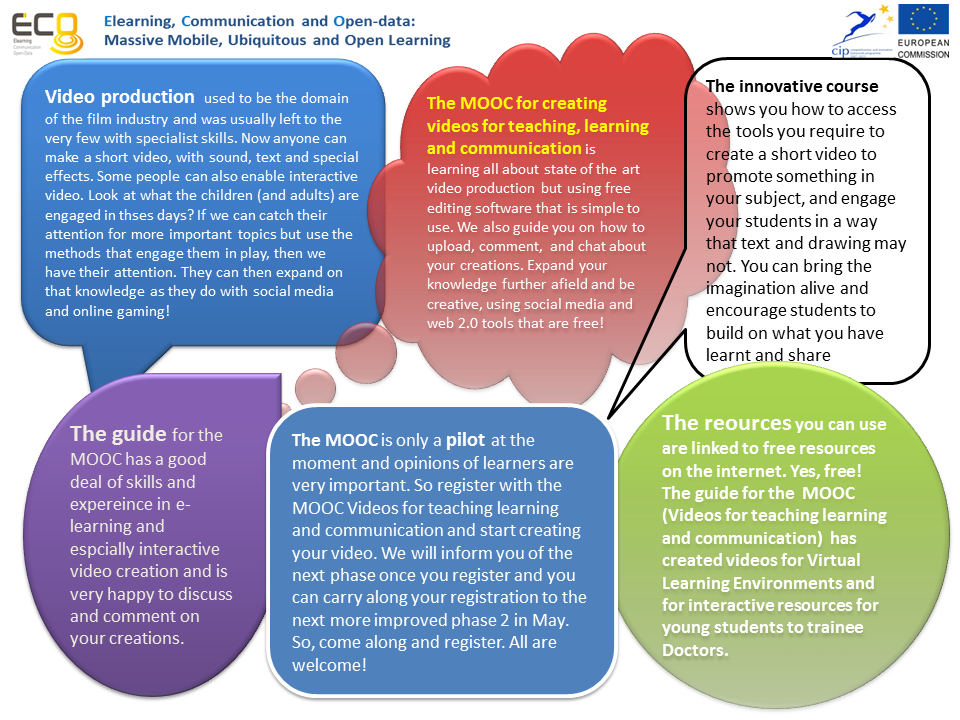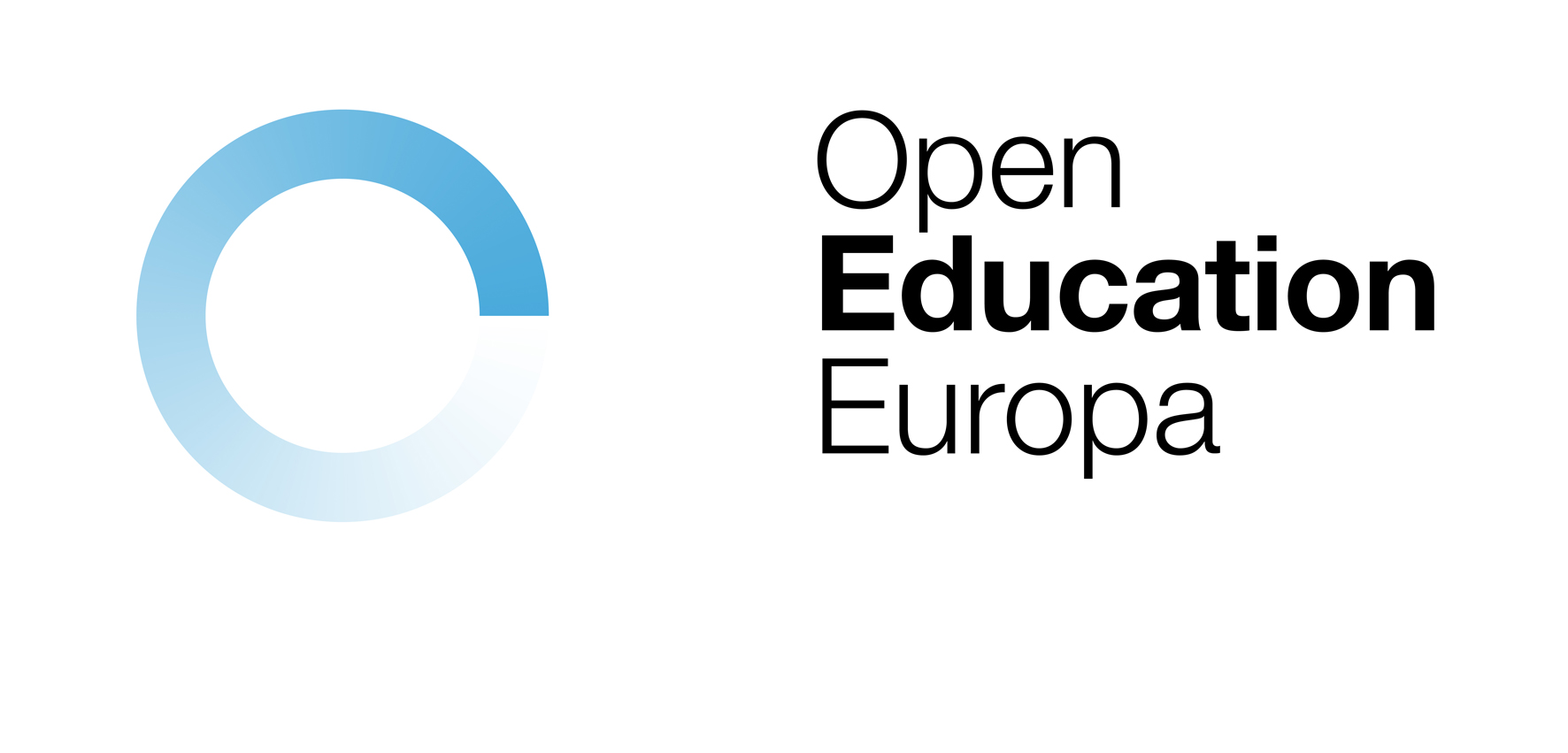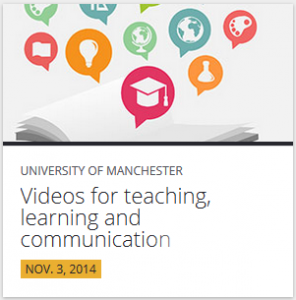The MOOC ‘Videos for teaching, learning and communication’ from the University of Manchester is aimed at any learner who wants to teach, market or communicate via the medium of video. Understanding how to create a basic video from the equipment you already have, searching for and using free editing tools, and knowing how to collaborate and cooperate using web 2.0 technology in a manner that is appropriate and protects privacy and safety online, are some of the learning goals of this course.
In this post, some frequently asked questions have been gathered and answered for those who are interested in joining the course or are currently doing it:
Q: Why take this short course, is it too late?
A: You can make a short video on any subject. You can take a couple of days or a couple of weeks.
Q: How will this course help my classes if I am a teacher?
A: Everyone likes to watch something short, entertaining and visual.
Q: I only have a smart phone, how can I make a video?
A: You will have links to any free software, no matter what device you have. You will also be given tips on how to use your camera on your device.
Q: I am not very creative; my videos may not look very professional, is that OK?
A: Any short video is practice, practice, and practice. The more short videos you make the better you become and everyone is at different levels. Some are real beginners; some are experts and want some tips. The course is for everyone.
Q: My microphone is not very good and the sound may not be perfect, is that OK?
A: That is no problem, as you are not expected to have expensive equipment, just the equipment you have on your smart phone, tablets or any other device.
Q: I do not have a YouTube space or Facebook or Twitter, or even blog.
A: No problem, you can get one easily and you are given links on simple instructions on how to create on.
Q: My English is not very good and I may find the instructions difficult, how can I do this course properly?
A: All the introduction videos have closed captions for different languages and scripts you can translate with Google Translate. Also there is a short English pre-course starting up very soon on the hub 2 for “Videos for teaching, learning and communication”.
Q: I have hearing problems and my sight is not very good. How can I access this course?
A: There are links for people who have problems with accessibility. For example, there are links to special software to help, such a sign language Apps. Or links to help you access your computers magnifying options.
Join Europe’s MOOC teacher community: Teach.Learn.anywhere.everywhere
Enrol now!
Author: Carol Ann Fowler – Teacher of ‘Videos for teaching, learning and communication’




